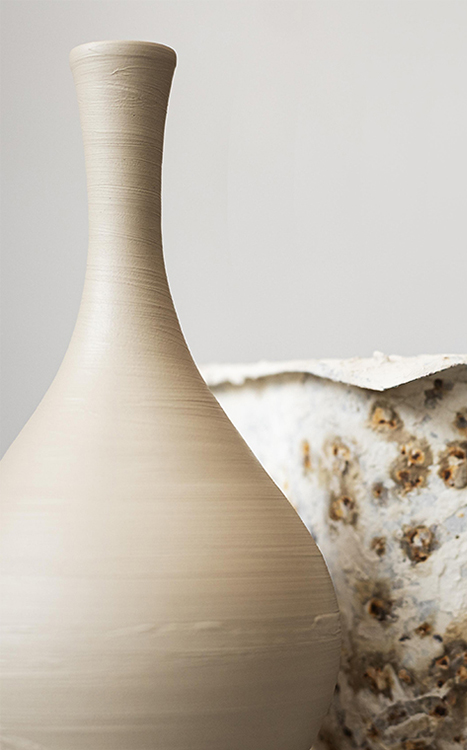COATING TECHNIQUES (2)
COATING TECHNIQUES
GLAZES
The glaze is a coating that is applied to ceramic pieces with the primary goal of protecting and sealing ceramic containers and objects.
When melted, glazes typically give the surface a vitreous look, while there are also glazes that give the finish a matte appearance. Although they are occasionally used on dry, raw clay, glazes are typically applied after bisque.
OXIDES
The metallic oxides are the ones that, when applied to a ceramic object, produce and give a distinctive color and effect.
The most common oxides employed by potters are iron, cobalt, copper, and manganese oxide, which are can also be employed as a basis to create different tones and the majority colors to be used on a ceramic object.
Once the object has been first fire and is bisque, oxides are typically added under the glazes. The color palette will change based on how much oxide we use, getting darker as we add more oxide to the mixture.
PIGMENTS
There are additional possibilities, such as utilizing pigments or dyes, if you don’t want to experiment with mixing the various metallic oxides and seeing the outcomes.
Industrially produced pigments or dyes are available in a large range of tones and are produced through several techniques.
The majority of the time, pigments are applied to bisqued ceramic objects, but there are always exceptions, such as when a ceramist tries something new on a leathered-textured clay or when the ceramic object is already dry.
COLORING TECHNIQUES

There are different coloring techniques but the most commonly used are dipping, spraying and hand painting.
Here we explain each of them in more detail:
DIPPING GLAZES TECHNIQUE
There are different ways of applying glazes. Dipping a ceramic object into a bucket of prepared glaze is one of the simplest ways to give it a smooth, uniform appearance. Also, we can dip it and use it as a base layer before adding decoration.
SPRAYING
Spraying is also another popular way of evenly applying the color on the ceramic object. Usually we need a spraying gun. The waste is considerable, which is why it is generally used in large productions.
HAND PAINTING
One of the most popular methods for decorating ceramics is the brush, which has been used by artists, craftspeople, and potters for ages.

 ...
...